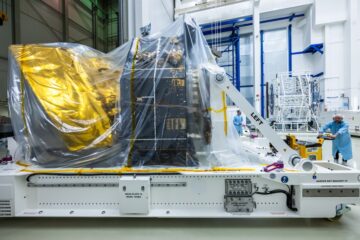Article written by: Emeritus Director, Professor Mark Bailey
WARMEST AND SUNNIEST JULY FOR FIVE YEARS, SLIGHTLY DRIER THAN AVERAGE
Armagh Observatory, 3rd August 2018: Armagh Observatory reports that July 2018 was much warmer and sunnier than average, with only slightly less than average total rainfall. The mean temperature was 17.0 degrees Celsius (62.6 Fahrenheit), approximately 2.2 C warmer than the long-term (1796–2010) average July temperature at Armagh and 1.2 C warmer than the most recent (1981–2010) 30- year average. This was the warmest July at Armagh for five years. The warmest day (highest maximum air temperature) was 27.1 C, which occurred on the 4th, followed by 26.7 C on the 22nd. Both these maxima wereslightly more than 80 degrees Fahrenheit. The coldest day (lowest maximum air temperature) was 14.4 C on the 11th. The coolest night (lowest minimum air temperature) was 7.6 C on the 10th, and the warmest night (highest minimum air temperature) was 16.6 C on the 27th followed closely by 16.5 C on the 23rd. The minimum grass temperature was 0.3 C on the 10th, so there were no ground or air frosts.

The Sun is at the centre of the Solar System. Its gravity dictates the orbits of the planets. The Sun is 6000 degrees Celsius on its surface and 14,000,000,000 degrees Celsius at its core. Credit NASA/SDO

We recorded 33.0 mm of rain, whereas the rest of the month (so far) combined saw 27.5 mm! It was in fact the wettest day since 13th November 2014, and the wettest July day since 25th July 1985 (making it the 10th wettest July day on record). Image Credit: Armagh Observatory and Planetarium
A total of 178.9 hours of strong sunshine were recorded during the month. This is approximately 22% more than the long-term (1881–2010) average number of hours of strong July sunshine at Armagh and 30% more than the most recent (1981–2010) 30-year July average. This was the sunniest July at Armagh for five years, that is, since the much sunnier July 2013. The sunniest day was the 2nd with 15.3 hours of strong sunshine, which is now the equal second sunniest day at Armagh since daily sunshine records began in August 1880. The three sunniest days at Armagh are now the 7th July 2004 with 15.8 hours of strong sunshine, and the 8th July 2017 and 2nd July 2018, both with 15.3 hours. The second and third sunniest days this month were the 3rd and 4th of July, with 15.1 and 14.1 hours of strong sunshine respectively. Total precipitation was 61.15 mm (2.41 inches) including five trace values, that is, 60.9 mm if trace values are ignored. This was nearly 83% of the long-term (1838–2010) average July precipitation at Armagh and 98% of the most recent (1981–2010) 30-year average.
The wettest day was the 28th, with 33.0 mm (1.3 inches) of precipitation, and the second-wettest day was the 19th with 10.7 mm (0.4 inches). The very wet 28th July 2018 was the wettest single day at Armagh for nearly four years, that is, since 36.8 mm recorded on 13th November 2014, and the wettest July day for 33 years, that is, since 33.8 mm recorded on 25th July 1985.
Despite recording very nearly the full average total rainfall for the month, July as a whole has appeared very dry. There are several possible reasons for this perception, which conflicts with the instrumental record. First, May, June and July were each drier than average, though July only slightly so. 2018 May was the driest at Armagh for ten years, June the driest for three years, and July the driest for four years. Secondly, Armagh experienced 20 consecutive days from the 20th June to 9th July, during which there was no measurable precipitation at all, that is, zero or just trace amounts. Furthermore, what significant rainfall there was during the month fell on just a handful of days, with almost 95% of the total precipitation falling on just five days, namely the 28th (33.0 mm), the 19th (10.7 mm), the 15th (5.4 mm), and the 14th and 27th (both 4.3 mm).
It may also be noted that the month was much sunnier than average, enhancing evaporation, and that during the three months May, June and July measurable precipitation occurred on an exceptionally small number of days, just 32 of a possible 92, which is significantly smaller than the three-month average of this quantity at Armagh, which is more than 50 days. For all these reasons, and perhaps also because the previous three Julys have been wetter than average, July 2018 has seemed pleasantly dry despite having nearly the average amount of total rainfall.
These data refer to observations at Armagh Observatory, which has been recording the weather at Armagh since 1795.




0 Comments